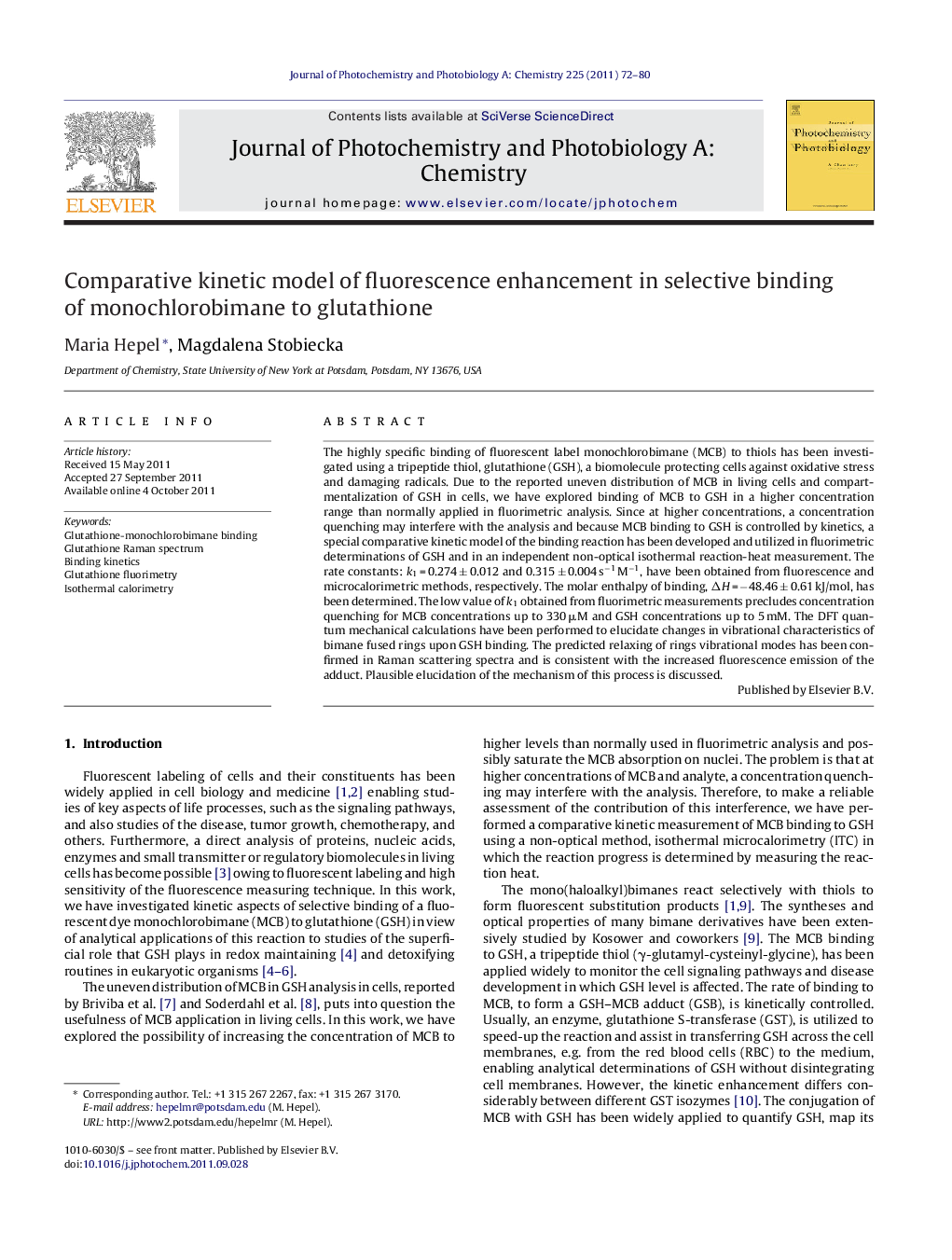| Article ID | Journal | Published Year | Pages | File Type |
|---|---|---|---|---|
| 26675 | Journal of Photochemistry and Photobiology A: Chemistry | 2011 | 9 Pages |
The highly specific binding of fluorescent label monochlorobimane (MCB) to thiols has been investigated using a tripeptide thiol, glutathione (GSH), a biomolecule protecting cells against oxidative stress and damaging radicals. Due to the reported uneven distribution of MCB in living cells and compartmentalization of GSH in cells, we have explored binding of MCB to GSH in a higher concentration range than normally applied in fluorimetric analysis. Since at higher concentrations, a concentration quenching may interfere with the analysis and because MCB binding to GSH is controlled by kinetics, a special comparative kinetic model of the binding reaction has been developed and utilized in fluorimetric determinations of GSH and in an independent non-optical isothermal reaction-heat measurement. The rate constants: k1 = 0.274 ± 0.012 and 0.315 ± 0.004 s−1 M−1, have been obtained from fluorescence and microcalorimetric methods, respectively. The molar enthalpy of binding, ΔH = −48.46 ± 0.61 kJ/mol, has been determined. The low value of k1 obtained from fluorimetric measurements precludes concentration quenching for MCB concentrations up to 330 μM and GSH concentrations up to 5 mM. The DFT quantum mechanical calculations have been performed to elucidate changes in vibrational characteristics of bimane fused rings upon GSH binding. The predicted relaxing of rings vibrational modes has been confirmed in Raman scattering spectra and is consistent with the increased fluorescence emission of the adduct. Plausible elucidation of the mechanism of this process is discussed.
Graphical abstractFigure optionsDownload full-size imageDownload as PowerPoint slideHighlights► Kinetics of nonenzymatic binding of monochlorobimane (MCB) to glutathione (GSH) was investigated in high-concentration range. ► Second-order rate constants were determined by fluorescence and isothermal microcalorimetry (ITC). ► No concentration quenching in fluorimetry has been found based on comparative ITC data. ► Molar enthalpy of binding for MCB to GSH was determined from isothermal heat flux decay. ► Quantum mechanics and Raman spectra confirm relaxing of bimane ring vibrations upon binding.
